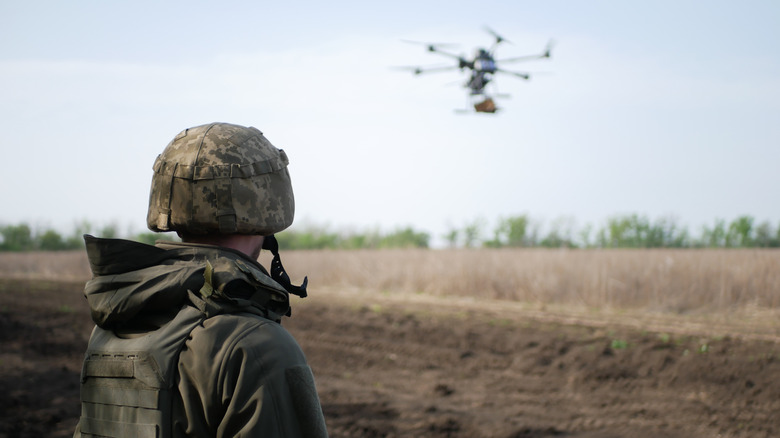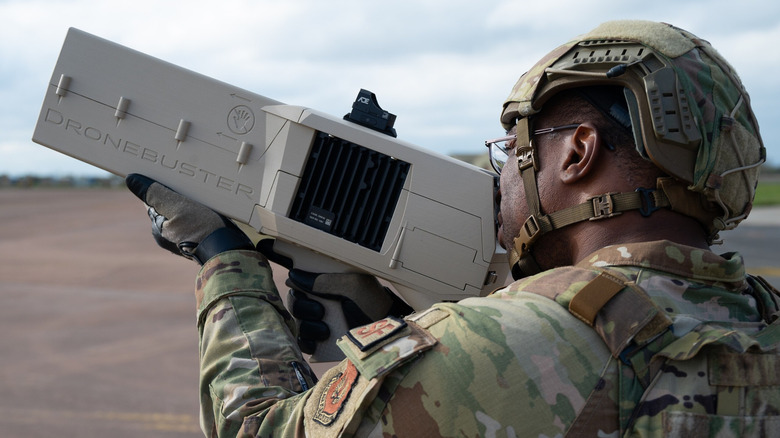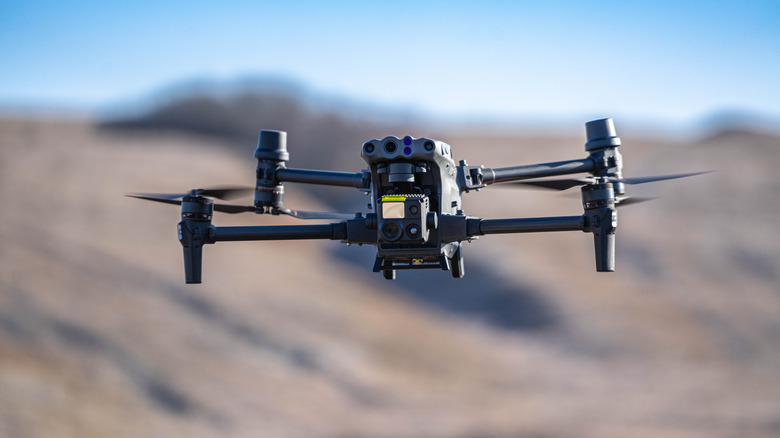Can US Military Bases Detect Drones?
Today's drones run the gamut from hobby flyers' beginner models to sophisticated Air Force fighter drones. These weapons can keep the operator relatively safe while potentially delivering a devastating blow in a smaller, subtler package. Along with such new weaponry, of course, comes the essential defensive question of how to detect and combat it. Military bases, such as those of the United States, are crucial hives of supplies, weapons, personnel, and more, and as such can find themselves primary targets. When it comes to detecting drones, though, these sophisticated strongholds still have a long way to go to reliably defend against this new menace.
The U.S. military itself operates numerous different groups of drones. Some are smaller, short-ranged models for reconnaissance, while others, like the appropriately-named MQ-9 Reaper, are renowned for their firepower (this model wields the likes of GBU-38 Joint Direct Attack Munitions and Hellfire missiles). Should a drone approach a base, the real difficulty is determining which type it is, what it's doing, and where exactly it's going.
As CSIS deputy director Clayton Swope noted in December 2024, "historically, efforts by the U.S. military to identify and track airborne threats to the homeland focus on ballistic missiles and bombers, meaning that sensors and algorithms processing radar data are not tuned to UAS threats." Additionally, the erratic movements and smaller size of typical drones makes them more challenging for radar to differentiate from, for instance, flying marauders such as flocks of birds. This isn't to say that U.S. bases strictly can't detect drones, but that the challenges associated with doing so are severe.
The complexity of countering drones
A complicating factor is the sheer amount of bases the U.S. military has around the globe. American University associate professor of sociology, David Vine, writes in Politico Magazine, "the United States still maintains nearly 800 military bases in more than 70 countries and territories abroad—from giant 'Little Americas' to small radar facilities." You wouldn't expect bases on the opposite ends of this spectrum to have nearly the same defenses or access to resources, and so it makes perfect sense that some of them wouldn't be well equipped to counter drones. There are potent defensive measures available for some of them to employ, though.
New Jersey's Joint Base McGuire-Dix-Lakehurst, for instance, introduced the Dronebuster technology in January 2020. This Flex Force Enterprises device can be carried by personnel or configured in a fixed role, and can interrupt or manipulate radio frequencies. It can also be set to detect them, thereby potentially warning of a drone's approach. The versatile system and its different variants can disrupt the drone's GPS and other navigation aids, interrupting the link with its controller and sending it back from whence it came. It can even down a drone entirely.
Other creative solutions like nets (either launched by ground-based apparatus or friendly drones) have been employed to quite literally catch rogue drones, but there are practicality drawbacks to such an approach. Meanwhile, more conventional base defenses such as radar systems are limited by the aforementioned challenge of distinguishing between drones (and varieties thereof) and birds. All in all, it's a multifaceted issue with no single solution.
When U.S. military bases fail to defend themselves from drones
In 2023, Virginia's Langley Air Force Base was plagued by a number of drones in its airspace. This high-profile incident raised several crucial questions, such as how they had evaded monitoring systems and what their intent may have been. On April 29, 2025, a hearing from the Committee on Oversight and Government Reform discussed the matter, and one conclusion was that bases as a whole remained disturbingly vulnerable. Representative William Timmons argued, per Air & Space Forces Magazine, "the multitude of drones reported flying over bases in the past several years revealed a coordinated effort by our adversaries to collect valuable intelligence and surveillance of some of our most sensitive military equipment." A drone in unauthorized airspace, even if just for a brief period, could be dealing far more than just potential explosive damage. Even if entirely unarmed, the information they could gather could have tremendous repercussions.
On the battlefield, drones can be dealt with through means such as the VAMPIRE, a far catchier acronym for the Vehicle-Agnostic Modular Palletized ISR Rocket Equipment. Some bases are equipped with sophisticated radar systems, and Ukraine has had success with using a system of acoustic sensors to detect incoming Russian drones, but the difficulty is that drones aren't a traditional or a predictable target. As Defense Innovation Unit director David Payne put it, per Air & Space Forces Magazine, drones are "hard to aim at, hard to hit, and ... whatever form of shot you're taking at it, you do not want that to impact something behind it."


